Summer of Swim

7 HIRING TRENDS TO EXPECT
Swim Facilities Adopting the Latest Waves of Technology to Face the Challenges of the 21st Century
ADDRESSING OPEN WATER COMPETENCY
UNITED STATES SWIM SCHOOL ASSOCIATION








7 HIRING TRENDS TO EXPECT
Swim Facilities Adopting the Latest Waves of Technology to Face the Challenges of the 21st Century
ADDRESSING OPEN WATER COMPETENCY
UNITED STATES SWIM SCHOOL ASSOCIATION






ASSOCIATION HEADQUARTERS
4815 E. Carefree Hwy., Suite 108-480 Cave Creek, AZ 85331 480.837.5525
usssa@usswimschools.org
usswimschools.org
Executive Director
Lisa M. Zarda, CAE, CNAP
Editor
Anne Swanson
ASSOCIATION OFFICERS
President
Tracy Koleber, Nitro Swimming
Vice President
Buffy Folise, Chicago Swim School
ASSOCIATION DIRECTORS
Davina Lopez Davina’s Swim House
Debbie Sayers DolFUN SWIM Academy
Ann Marie Sunderhaus Hubbard
Family Swim School
Melissa Taylor Small Fish Big Fish Swim School







A slight departure from the typical note from the President of the United States Swim School Association. Hope you enjoy!
For those of you who like numbers, here are a few statistics I borrowed from an article on Livestrong.com by Bojana Galic:
• Swimming is the fourth most popular recreational sport in the country, according to the Centers for Disease Control and Prevention (CDC), after walking, running, and cycling.
• About 91 million Americans (about 31% of the population) over the age of 16 swim in oceans, lakes, and rivers each year.
• About 36% of children 7 to 17 years old swim at least six times each year.
• About 15% of adults swim at least six times each year.
Also, According to NBC Sports, the top U.S. swim cities—measured by the number of active swimmers, accessible pools, and top-level swimmers—include:
• Ann Arbor, Michigan
• San Jose-Sunnyvale-Santa Clara, California
• Raleigh-Durham, North Carolina
• Bridgeport-Stamford-Norwalk, Connecticut

• San Francisco-Oakland-Fremont, California
• Fort Collins-Loveland, Colorado
• Madison, Wisconsin
• Austin-Round Rock, Texas
• Los Angeles-Long Beach-Santa Ana, California
• Indianapolis-Carmel, Indiana
Swimming is not only the #1 activity to cool off during the hot summer months, but it is also the go-to choice for a low-impact, highly effective cardio activity that can burn a lot of calories! In fact, just 30 minutes of backstroke can burn 298 calories for an average 155-pound person. Is anyone curious what the same amount of butterfly will do? How about a whopping 409 calories! Of course, I don’t know too many people on my friends list who could sustain a half hour of fly!
But on the more serious side of swimming, what plays a much bigger role in the dangers and risks of swimming is a simple word: Confidence. More specifically, over-confidence.
Continued on next page...
We are thrilled to announce that between the funds that we raised and money that had been allocated for PR/Marketing within the USSSA’s 2023 budget that we are able to move forward with the first two stages of the Berman proposed scope of work. The first stage is the branding analysis and the second stage is the website revamp. These first two stages will be completed in roughly four to five months. During this time, we will continue to raise funds to support the last two stages. We are thrilled to have Berman and Company as our partner in transforming the future of USSSA. We strongly encourage you to donate to this cause if you haven’t already. We are asking that every member contribute $1,440 which works out to $120 per a month. That is a small investment to build a substantial future. Donate today by scanning this QR code:
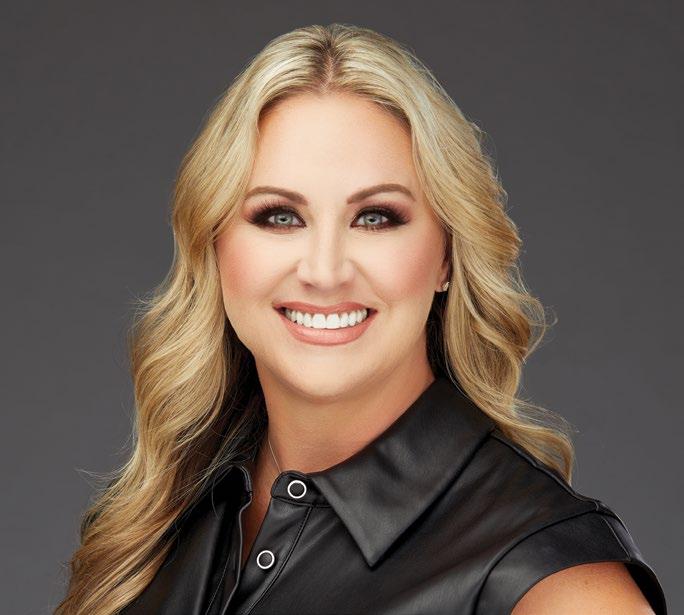
This is especially true at the start of each swim season, even though we all believe there shouldn’t be a “season” for swimming as we are engaged year-round. Regardless, the population migrates to the water every summer. And with that, the overestimation of one’s swimming ability, be it pool, lake, river, etc., comes into play.
Many people haven’t swam for months and they believe they can simply pick up where they left off at the end of last summer. It takes time to get back to where they were, but most people aren’t aware of that.
The temperature of the water can also play a major factor as well. A lake in Minnesota is a lot colder on Memorial weekend as opposed to what it is in the middle of August. That can have a detrimental effect on anyone’s swimming ability.

Here are some sober numbers to bring the message home: Alcohol use plays a role in up to 70% of deaths associated with water recreation among adolescents and adults each year, according to the CDC. This furthers my point about confidence and overconfidence. It is a proven fact that alcohol hampers judgment.
And lastly, a word about life jackets: 88% of people who drown boating weren’t wearing life jackets. Such a simple preventative measure that could save countless lives, yet not enough wearing them.
As we head into another Summer of Swim, let’s help keep things safe while cooling off in the 4th most popular recreational activity in the world. And good luck with those 30-minute butterfly workouts!
TRACY KOLEBER President US Swim School Association
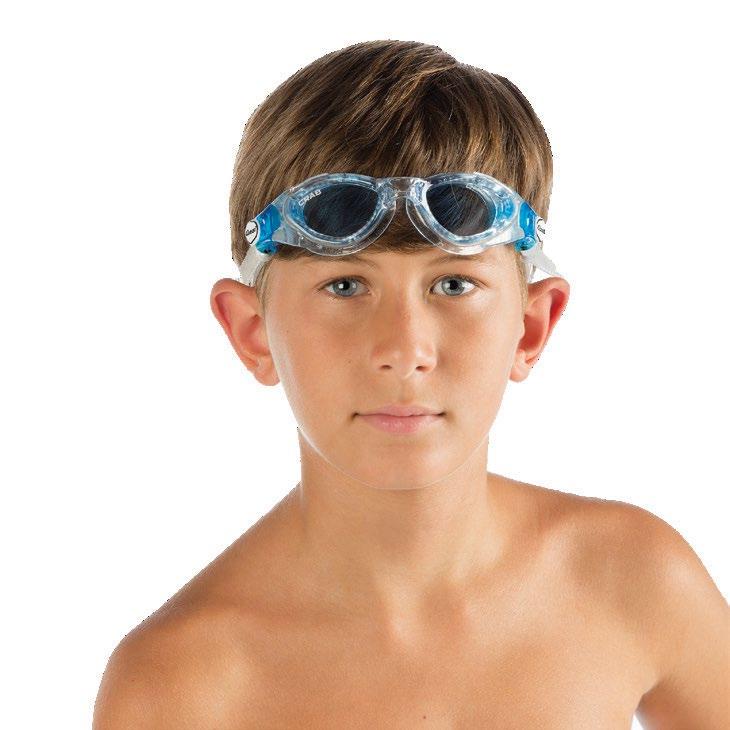








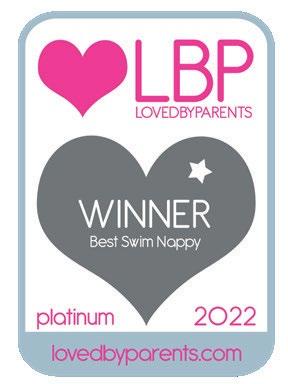
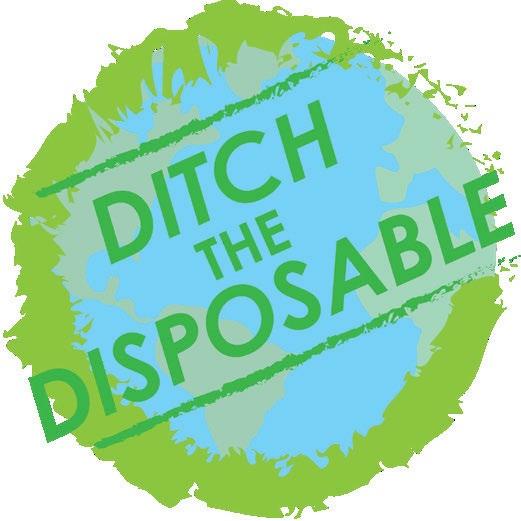
I’d like to take a moment to remind all of you why you should take a deep breath and stand tall knowing that you are making a difference in your community.
You are teaching an essential life skill: Swimming is a vital life skill that can save lives, prevent drowning, and promote overall health and well-being. As a swim school owner, you have the opportunity to teach this valuable skill to children and adults every day.

You are creating a safe and positive environment: Swim schools provide a safe and positive learning environment for people of all ages and abilities. As a swim school owner, you can create a culture of inclusivity and positivity, which can lead to increased self-confidence, self-esteem, and overall wellbeing for your students.
You are building a community: Running a swim school provides the opportunity to build a tight-knit community of swimmers and their families. You are creating a sense of belonging and camaraderie among your students, which can foster lifelong friendships and connections.
You contribute to society: By teaching swimming, you are contributing to society by helping to prevent drowning, promoting physical fitness, and providing a valuable service to your community.
You get to see progress and success: As a swim school owner, you have the opportunity to witness the progress and success of your students firsthand. Seeing your students learn and grow in their swimming abilities can be incredibly rewarding and fulfilling.
I hope you take some time to appreciate all you do for your students, families, communities, and staff. You will find throughout this issue an opportunity to reflect on each of these areas, to continue to grow and cultivate your swim school for this summer and beyond.
LISA M. ZARDA, CAE, CNAP Executive Director | US Swim School Association
As we run, or swim, full force into the upcoming summer months it can be easy to feel burned out and overwhelmed.
i n t e r v i e w s c h e d u l i n g .



With a CareerPlug Premium plan, you'll get access to:






A u t o m a t e d i n t e r v i e w s c h e d u l i n g w i t h t h e
n e w A u t o p i l o t f e a t u r e
O n e - c l i c k p o s t i n g t o a l l t h e m a j o r j o b b o a r d s
i n s t a n t l y
T e x t m e s s a g e r e c r u i t i n g t o c o n t a c t
a p p l i c a n t s f a s t e r
F u l l r e c r u i t m e n t s o f t w a r e p r o g r a m $275
The tight labor market of 2022 meant that employers had to compete for top talent and continue to evolve their jobs and workplaces based on the changing demands of job seekers. It seems that this is one trend that will continue through 2023.
What else can employers expect to see this year?
We’re breaking down the hiring trends that will be most prominent in 2023 and sharing recruiting advice that will help you this year and beyond.
According to CareerPlug’s hiring data gathered from over 16,000 employers in 2022, 71% of employers contacted applicants within 24 hours of applying and 46% of employers scheduled interviews within 48 hours.
We’ve also noticed a trend over the past three years of employers hiring faster as competition in the labor market has increased. In 2020, employers took an average of 24.7 days to hire, compared
to 18.4 days in 2021 and 14.5 days in 2022. Clearly, businesses are feeling the pressure to speed up their hiring and this is a trend that shows no signs of stopping in 2023.
Our recommendation is to aim to make your hires within 10 days of posting a job. With competition for employees high from big box retailers like Amazon and Walmart, if you wait more than a few days to reach out to a candidate, then more than likely, they have moved on to another opportunity.
We suggest speeding up your hiring process by automating as much of it as possible. Use text recruiting to communicate with candidates faster. Text messages receive an 8 times higher response rate than email, along with a much faster response time. You might also consider automating interview scheduling with an applicant tracking system like CareerPlug, which instantly sends your qualified candidates a link to schedule an interview on your calendar.
Continued on next page...
As an employer, keeping up with ever-changing hiring trends can feel nearly impossible. But staying up to date is crucial if you want to make the right hires for your team.
In 2022, New York City joined several other states like Colorado and California in passing pay transparency laws, some of which require employers to put compensation in the job description or disclose it during the initial interviews.
Pay transparency also involves creating more visibility to your existing staff around compensation structure and how raises are calculated. We’ve long promoted this as a best hiring and retention practice, and expect it to continue gaining steam in the years to come.
Pay transparency is a good thing because not being transparent with salary disproportionately affects women and people of color who historically have been paid less and are less likely to negotiate salaries.
It also provides a better candidate experience and can save you time in the hiring process. Why wait until the final hiring process stages or even making an offer to find out that what you are willing to pay doesn’t meet a candidate’s expectations? Let them self-select in or out of the opportunity early on and avoid awkward negotiation conversations. It’s a win, win for everyone.
We are proud to be leaders in candidate experience research, annually publishing our Candidate Experience Report to help employers understand what job seekers truly want from a hiring process. Over the past few years, we’ve seen an increased focus on the candidate experience, or the experience a job seeker has with an employer throughout the entire hiring process, from job posting to job offer.
Today, many employers understand the impact candidate experience can have on their ability to make the right hires. Our research shows that 49% of job seekers have declined an offer due to a poor candidate experience.
In such a competitive labor market, it’s important to keep in mind that job seekers are forming opinions early. They have too many options to settle for the company that treated them poorly during an interview or took too long to respond after they applied.
An increased focus on creating a positive candidate experience is certainly a good thing, and is a trend you can count on seeing in 2023.
Remote work increased rapidly during the global pandemic, and though many things on the COVID front have returned to some level of normal, employees’ desire for flexible working options may be here to stay.
In one FlexJobs study, 65% of people reported wanting to work remotely full-time. In 2023, we can expect a continued preference for fully remote work, but we’ll likely also see a rise in hybrid work options as well. A recent AT&T study found the hybrid work model is expected to grow from 42% in 2021 to 81% in 2024.
Employees appreciate the flexibility that remote and hybrid work allow, meaning that if it’s all possible for your business, these perks can help you attract more top talent. Plus, the fully remote model opens up your talent pool and can save your company on the expense of office space.
If you operate a business that can’t go remote – such as brick and mortar stores – you can still find ways to advertise flexible work practices to job seekers. Consider asking your current staff how they feel about your business’ shift scheduling practices. What do they like about it? What could be improved? Do you make it easy for them to swap shifts? Do you accommodate schedules to match people’s needs outside of work, like school and child care? If so, these are great perks to highlight when you’re recruiting.
We found that
48% OF JOB SEEKERS HAVE HAD AT LEAST ONE NEGATIVE EXPERIENCE IN THE HIRING PROCESS IN THE PAST 12 MONTH.
49%
OF JOB SEEKERS SAID THEY’VE DECLINED A JOB OFFER BECAUSE OF A POOR EXPERIENCE WITH A POTENTIAL EMPLOYER DURING THE HIRING PROCESS.
In recent years, many companies have committed to increase diversity, equity and inclusion in the workplace, and this positive trend is one we can expect to continue in the years to come.

Diversity is a broad term that refers to more than just race and gender. A diverse workforce is one where people of different origins, education, lifestyles, skills, and physical abilities are represented. Employers have made the important realization that diversity is important not only from an ethical perspective, but studies show that diverse teams perform demonstrably better than teams that lack diversity. It’s important to acknowledge that all humans have unconscious biases, and these can have a damaging impact on the hiring process. Hiring for diversity and inclusion involves overcoming these biases and building a more diverse workforce. Educating yourself on the most common biases that show up during hiring can be a great place to start.
Gen Z will make up an estimated 25% of the workforce by 2025. And with much of this generation now hovering around 23- 25 years old, we can expect them to take on junior level roles in the next few years. If you haven’t already, it’s time to embrace this younger generation’s infiltration of the workplace.

Some of our best tips for recruiting Gen Z?
• Make your job postings and applications mobile-friendly.
• Embrace tech in your hiring process and make use of virtual interviews.
• Make your company culture a prominent part of recruiting efforts.
• Meet younger job seekers where they are by recruiting on social media
With every passing year, business owners have more tools at their disposal to make the difficult task of running a business just a little easier. One indispensable tool that you can expect to be on trend for 2023 and beyond is the applicant tracking system
An ATS like CareerPlug can help you streamline your hiring process so that you can make better hires quicker and more confidently. Employers that embrace this technology have a competitive advantage over others looking to hire from the same talent pool.
Some of the biggest benefits of using an ATS include:
• Post jobs to all the major job boards with just one click
• Instantly communicate with applicants

• Automate interview scheduling
• Reduce interview no-shows
• Evaluate candidates using built-in screening tools and assessments
 BY JOHN SPENCE
BY JOHN SPENCE
I have just completed my 24th year as an instructor for the Securities Industry Institute at the Wharton School of Business. The attendees of this event are senior executives of major financial institutions. This year they asked me to put together a new class on accountability. The course was exceptionally well received, but I was fascinated that the main topic they wanted to focus on was not holding their people accountable; it was holding their peers and leaders accountable. Here is some of the advice I gave them.
When holding a peer or superior accountable, there must be an atmosphere of psychological safety. There must be enough trust that people can speak with candor. They must be able to discuss difficult topics professionally. Telling your boss, they did not deliver on what they promised can be awkward. But if they understand that their lack of accountability impacts your work, they should be more open to your feedback.
Here’s where it gets tricky. When holding a subordinate accountable, you can impose consequences for noncompliance. However, you don’t have that option with your peers or boss. Mutual accountability at that level rests on maintaining a high level of personal accountability. I need to be confident that the other person will do what they say and demonstrate that I consistently deliver what I promise. If I hold myself to high accountability standards, I have earned the right to hold others accountable.
If you are the peer or boss, you must embrace others holding you accountable. You should expect, request, and appreciate it.
Before letting an employee go, careful consideration is crucial. That’s why I’m excited to offer a free white paper: ‘What to Ask Yourself Before You Fire an Employee.’ Gain insights on effective management and decisionmaking, and ensure your company’s values and culture are upheld. To access the white paper, visit https://it6mdnbt. pages.infusionsoft.net/?affiliate=0
Reprinted with Permission.
A big part of this is establishing unambiguous goals. When possible, make them binary. You want to take all emotion, politics, and opinion out of the equation. The person either accomplished it or didn’t. It is just data.
Next, you must gain agreement from the other person that they accept accountability for this item. It is essential that they communicate that they understand what is required and commit to accomplishing it. I strongly recommend that you get both the expectations and agreement in writing. In this way, there can be no doubt that everyone is on the same page.
The single most crucial factor in accountability is setting exceedingly clear expectations.
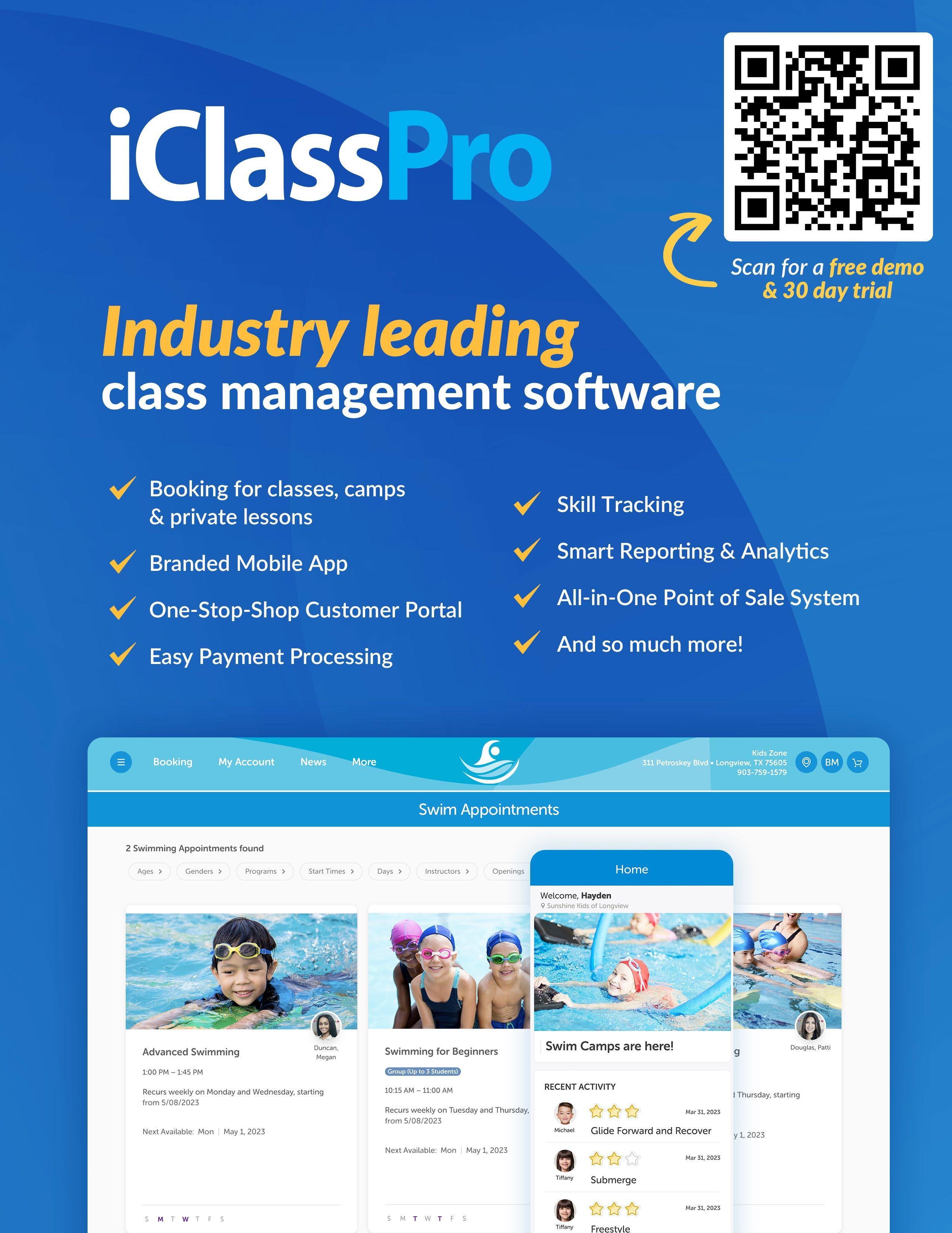 BY JILL MCHUGH HOPE FLOATS FOUNDATION
BY JILL MCHUGH HOPE FLOATS FOUNDATION
Padma dreamed of enrolling her daughter, Meera, in swim lessons for five years, but couldn’t afford it. Last Fall, her neighbor told her about Hope Floats Foundation and the scholarship program at their local swim school. Twelve weeks after Meera’s first lesson, we received an email from Padma.
There are so many other benefits to kids receiving swim lessons other than the life-saving water safety skills they learn. Studies show that children who participate in swim lessons sleep better, exhibit better communication skills, have higher levels of confidence, and improved academic grades. Hope Floats’ recently published 2022 Annual Report highlights that 94% of scholarship recipients reported an improvement in academics and 90% reported an improvement in sleep.
Meera was one of the 642 children who received a swim lesson scholarship in 2022. With more than 101 swim school partners across 34 states, Hope Floats provided 7,704 swim lessons last year. Through partnership with high-quality swim schools, underserved children in low-income households receive swim lessons. Underserved children have a higher risk of drowning and it is the mission of Hope Floats to combat these sobering statistics by saving lives.
To learn more about Hope Floats Foundation’s scholarship program and how to partner, reach out to the executive director at director@hopefloats.foundation or visit www.hopefloats.foundation.com
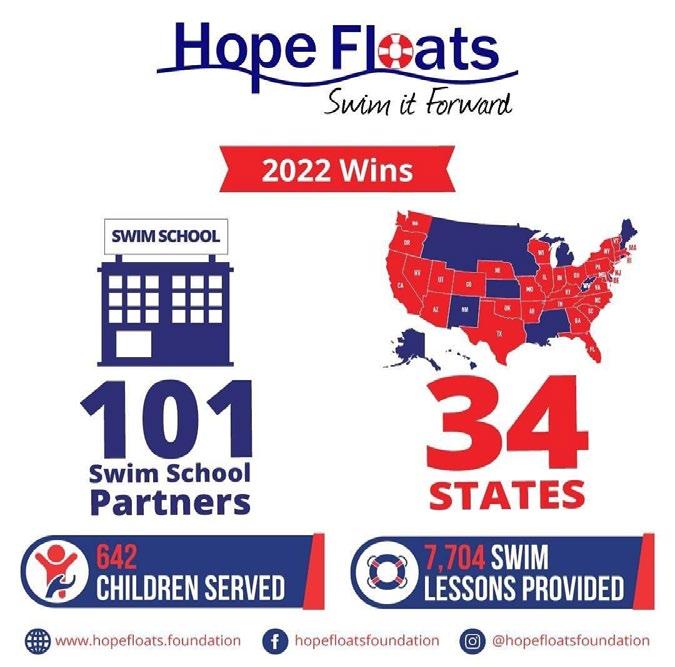

“My daughter has improved in school performance. Because of swimming she has gained a lot of self-confidence. Her appetite is getting better. She gets very excited of the day of her swimming class and I can tell that she is enjoying her life with a big smile.”








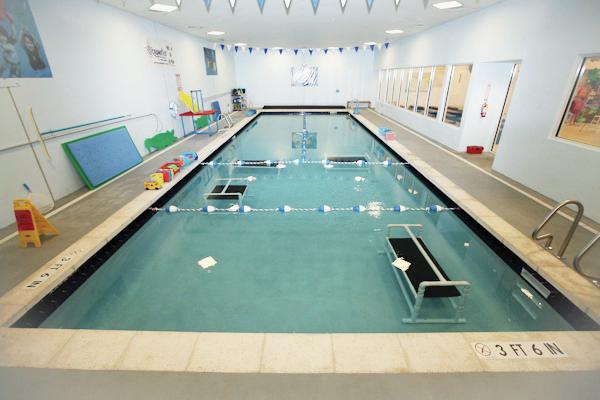


Step 2
BUSINESS
VALUATION
Step 3
BUSINESS SALE
CONSIDERATIONS
Step 4
BUYER SEARCHES
Step 5
NONDISCLOSURE AGREEMENTS (NDA)
Step 6
LETTER OF INTENT (LOIs)
Step 7
DUE
DILIGENCE (DD) PERIOD
Step 8
PURCHASE AGREEMENT
Step 9 PUBLIC COMMUNICATION
Reasons for Valuation - Determine Sale Price, Update Net Worth, Health

Reason, Divorce, Partnership Dissolution, Death
Gather & Upload Documents from the 3rd Level Provided List
Owner Discretionary Earnings
Interview & Valuation Review
Sale Price, Timeframe, Terms & Conditions
Real Estate - Sale or Lease
Consulting/Marketing Agreement
Internal Buyers. Local Buyers. Industry Buyers.
Private Equity Groups Outside Buyers
Obtain NDAs from prospective buyers. Qualify buyers as bona fide candidates. Present buyer candidates to you. Solicit Letters of Intent.
Obtain LOIs from qualified buyers. Present LOIs to you. Assist with ranking of LOIs. Communicate with top buyers.
Consider exclusive time period. Coordinate the DD process. Start the Purchase Agreement formation. Start any Landlord or Real Estate contracts.
Purchase Agreement negotiations/finalization Set Closing date and location
Private notices to your Key Managers. Preparation of a Joint Public Announcement.
Step 10 Closing and Celebration!
Warmer New England weather, and Memorial Day as the “unofficial” start to summer makes this mission even more crucial as we know that children are very susceptible to unexpectedly falling into a body of water.
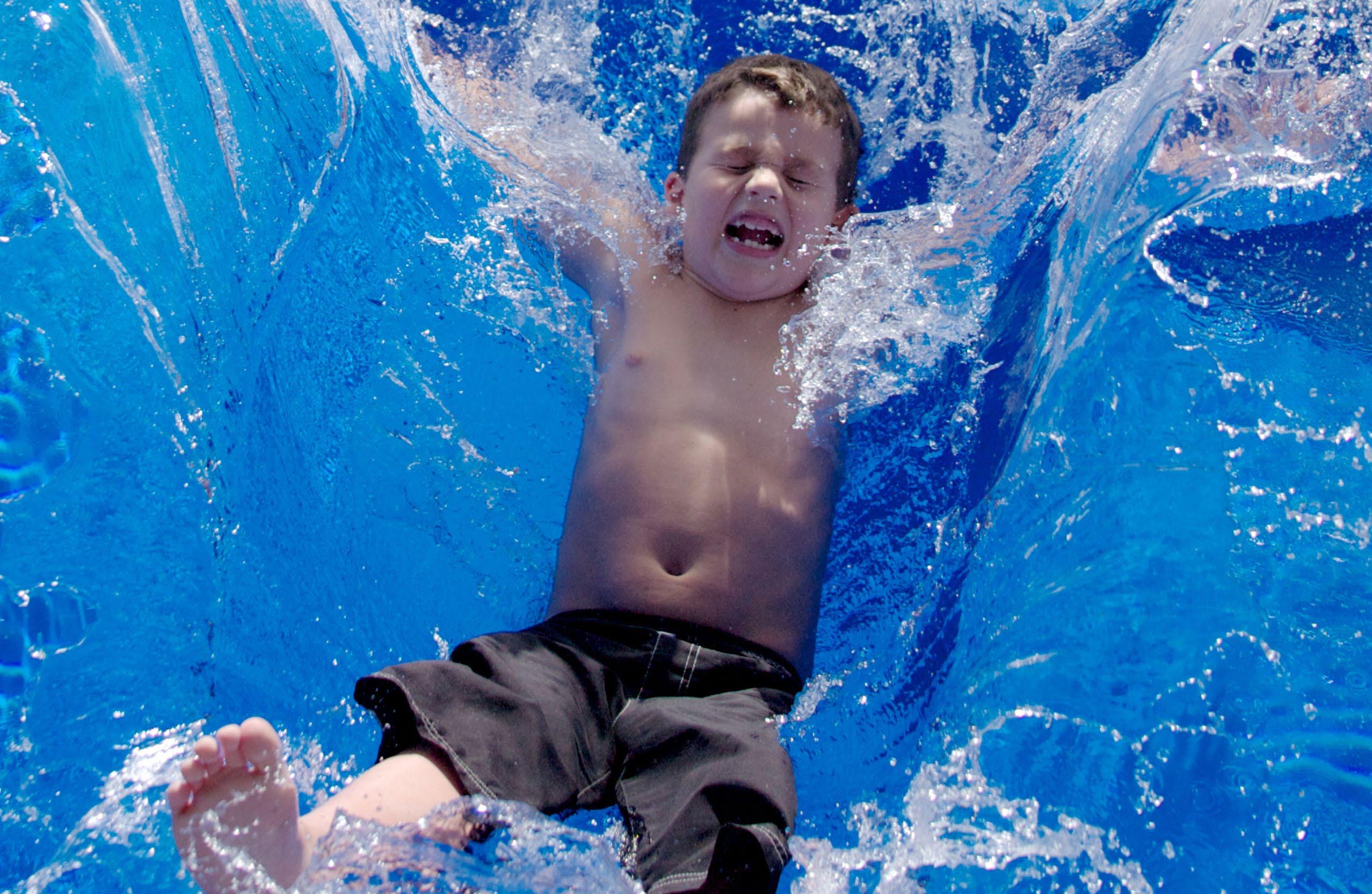
In an effort to prepare students for this scenario, Little Flippers Instructors spend a portion of each and every lesson simulating a variety of unexpected falls into the water as well as recovery techniques. As early as 6 months, caregivers and instructors work to simulate a fall into the water from a seated position. Either on cue or independently, this allows even the tiniest of babies to begin to establish breath control when experiencing an unexpected fall into the water. As students gain confidence, we encourage them to lean forward and “fall” into the pool independently, as if they were reaching out to grab a toy or adult. Progression in both age and ability, results
Continued on next page...
At Little Flippers Swim School, there is no question that safety is our number one priority when it comes to teaching swimming as a lifesaving skill.
in more advanced scenarios. As students age/level up, each lesson includes either a turn to the wall, a float for breath and rest, endurance swimming and a treading water challenge! But the final piece to this safety puzzle is the recovery. At Little Flippers, we feel that the best way to independently recover after a fall into the water, is to return to the spot in which they came from and hold onto the wall and/or climb out. Beginning with our adult participation classes, we guide swimmers by using the elbow, elbow, belly and knee method. It starts by placing one elbow on the wall, then the next, then the belly, etc. Repeating this skill every time the child climbs out of the pool helps to build their confidence and muscle memory.
Despite all of our regularly practiced safety skills, it is still not enough as we know that if a child were to access the water outside of our doors, it would most likely feel very different. Children become very comfortable in our warm, controlled environment and can execute most safety skills with ease over time. Faced with the challenge of how to challenge, we added in additional safety weeks to our sessions. Safety Weeks are an opportunity to guide students to react as they enter the water unexpectedly. We encourage students to attend class fully clothed, with shoes on and to leave the goggles at home. Typical safety skills are practiced and even a few extras, which include dropping our students into the pool or guiding them in backwards to simulate an unexpected entry and feeling disoriented.
It is our greatest hope, that with all of this repetition at the end of each and every class, our students will come to “expect the unexpected” and recover quickly and safely if they access the water unplanned.

IT IS OUR GREATEST HOPE, THAT WITH ALL OF THIS REPETITION AT THE END OF EACH AND EVERY CLASS, OUR STUDENTS WILL COME TO “EXPECT THE UNEXPECTED” AND RECOVER QUICKLY AND SAFELY IF THEY ACCESS THE WATER UNPLANNED.
FOR MORE DETAILS, VISIT: USSWIMSCHOOLS.ORG/EVENTS
MAY 4-5, 2023

CERTIFIED POOL AND SPA OPERATOR (CPO) COURSE

VIRTUAL
MAY 17, 2023
SPECIAL ABILITIES EDUCATION WORKSHOP
VIRTUAL
MAY 23, 2023
INFANT TODDLER EDUCATION WORKSHOP

VIRTUAL
OCTOBER 2-4, 2023
USSSA NATIONAL CONFERENCE ORLANDO, FLORIDA

BETTER BEANS BRANDING
HINGE EARLY EDUCATION
CES

NEPTUNE-BENSON EVOQUA
VORGEE
IPLAY/GREENSPROUTS

PROVEN
MERCHANT COST CONSULTING

ONE TEAM 360 LEGALSHIOELD/ID SHIELD
NORDPASS CINTAS
CONSTANT CONTACT
COUNSILAMN-HUNSAKER
USERWAY

WORLDWIDE SWIM SCHOOL.COM

SPORTSENGINE
TAKE COMMAND
TALENT LMS
This fantastic opportunity is brought to you by TeamUnify!

Thank you to Team Unify for sponsoring our Water Safety Month and allowing us to share this for free this month!
Just in time for Water Safety Month, A Safety Day Lesson Plan video for ages 3-10 has been released. This safety video is a small excerpt from the Preschool Course that will be released later this year. This exciting free opportunity is only available for the month of May so be sure to check it out today!
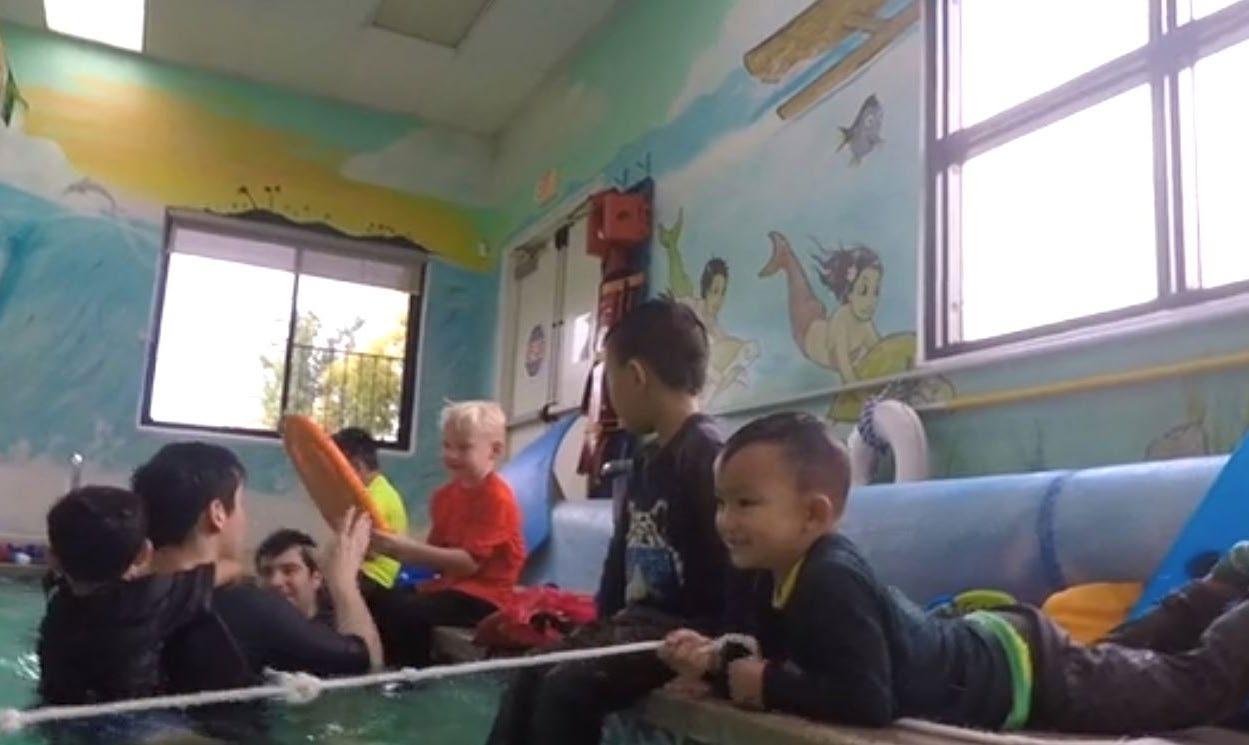
You can anticipate more safety resources and the entire Preschool Course to be launched very soon!
Take a peek at the link below and see what you think!
https://bit.ly/SafetyDayLesson5-2023


You didn’t get into business to fail. You got into it to turn your passion into success. The Entrepreneurial Operating System® (EOS®) helps you solve the issues that keep your organization from reaching its full potential — not at the surface, but at the root.





If you want more clarity and traction in your business, then it’s time to explore the same EOS Tools used by over 100,000 companies around the world. They’ll help you lay a strong foundation for your organization, make the most of every challenge and opportunity you face, and translate your passion into the results you deserve.
EOS was designed for busy, success-driven entrepreneurs like you. It gives businesses of 10-250 employees the tools they need to finally gain traction in their business, build a strong team culture, and achieve their most passionate goals.
YOUR LEADERSHIP TEAM WILL GET A GRIP ON THREE THINGS:
Getting everyone in your organization 100% on the same page with where you’re going and how you plan to get there.
TRACTION®
Instilling disciple and accountability throughout the company so that everyone executes on that vision — every day.
HEALTHY
Helping your leaders become a more cohesive, functional, healthy leadership team.
EOS CAN HELP YOU ELIMINATE COMMON BUSINESS FRUSTRATIONS:
• People (not all on the same page)
• Control (lack thereof)
• Profit (not enough)
• Hitting the ceiling
• Nothing is working
LET’S TALK ABOUT YOUR BUSINESS Schedule a FREE 90 Minute Meeting with me to get started.
Certified EOS Implementer®


eosworldwide.com/mary-reilly-magee
mary.reilly-magee@eosworldwide.com
210 -381-9174

A few years ago, I facilitated a company-wide training program for an 80-person organization. Early in the program, we were talking about career deal breakers and I asked someone in the group to share a deal breaker, so I knew that everyone was clear on what is and is not a true deal-breaker.
BY SHARI HARLEYAn employee spoke up. She said, “I’ve been here six weeks. I’m overwhelmed and exhausted. If I don’t get some help soon, I’m leaving.” People in the room gasped audibly. And everyone surely thought the same thing –“She’s done. She’ll be gone by Friday.”
I ran into the organization’s CEO at the Denver airport two weeks later and we had dinner together. Over dinner, I asked if I could give him some advice. I said, “That woman who spoke up during the training did you a huge favor. You spent time and money to become a more candid organization; she gave you the opportunity to demonstrate whether or not you really mean it. Make sure nothing (bad) happens to her.”
It can be really hard when people disagree with us. Leaders institute a new practice, employees resist. Employees say they agree with a policy during a meeting but managers hear otherwise after the meeting.

It may feel easier to introduce a practice and ask employees to follow it without asking what they think. And sometimes it makes sense to do that. You don’t need to involve employees in every decision. But in an organization, it has to be safe to offer a counter-point-of-view. It must be safe to disagree.
Continued on next page...
Disagreement is hard. But silence and the fear of speaking up is dangerous. Organizations full of yes people don’t innovate. They don’t solve problems or find new ways to save costs. They don’t grow, develop, or change. Hearing the truth takes courage and persistence. Put your ego aside and ask – again and again and again.
Every time I work with a new organization, at least one employee pulls me aside and tells me about the organization’s “list”. Employees who speak up and say things the leadership team disagree with get put on the “list”. And employees who make the “list” disappear from the organization. Mind you, no one has ever seen this “list”, but employees everywhere are convinced it exists. And this is a challenge for leaders.
Even leaders who do all the right things regarding asking for and being open to all kinds of input are up against the belief that it isn’t safe to tell the truth at work. There may be no consequences whatsoever for speaking up, but the perception of the negative consequence is what matters. And this perception is powerful and pervasive across organizations.
So what is to be done? How do leaders get the truth when employees are afraid, disbelieving, and perhaps cynical?

1. Put your ego aside. It hurts when people disagree with our beliefs or approach, and we’ll be fine. Let curiosity rather than your ego run the show.
2. Ask for input. Ask again and again and again. Employees may eventually believe that you really want their input.
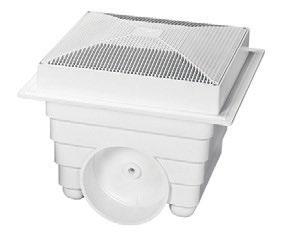
3. Ask for input in different ways – in-person roundtable discussions, email, and surveys.
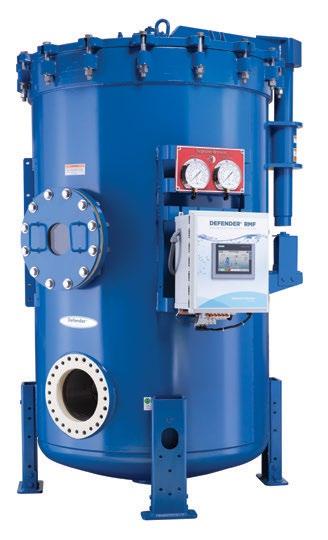
4. Ensure there are no negative consequences for speaking up. You can coach employees on how they spoke up and make suggestions for diplomacy, but reward the courage it took to speak up.
5. Share what you learn after gathering data. Don’t be a black hole. Give more information than you think you need to.
6. Tell employees the ideas you’re accepting and those you’re rejecting and why. It’s ok not to accept and act on all feedback. But close the loop and explain the rationale for decisions.
7. Be human. Admit failure, fear, worry, and wins. People trust leaders who are human, and humans have feelings and make mistakes. I’ll follow a humble leader further than a polished and seemingly perfect one.
Shari Harley is the founder and President of Candid Culture, a Denver-based training firm that is bringing candor back to the workplace, making it easier to give feedback at work. Shari is the author of the business communication book How to Say Anything to Anyone: A Guide to Building Business Relationships that Really Work. She is a keynote speaker at conferences and does training throughout the U.S. Learn more about Shari Harley and Candid Culture’s training programs at www.candidculture.com
Reprinted with Permission.

Maximize Your Swim School’s Value.
HINGE Advisors is the nation’s leading expert in growing and selling private early education businesses — successfully closing more than 200 school transactions in the last two decades.

The HINGE team follows a proven process that has resulted in a 95% close rate for listed companies and more than $500 Million gained in value for our clients. We proudly maintain strong relationships with more than 500 active buyers and our competitive process has resulted in 21% higher selling proceeds — often exceeding our client’s pricing objectives.
Learn more at www.hingeadvisors.com or get in touch with us at 864.554.4498 or info@hingeadvisors.com.
Increase your value by accessing a buyer database with more than 500 active buying groups.
On average, our competitive process earns clients a 21% higher value over considering a single buyer.

Secure the best fit for both the staff and the families that you serve.

I have asked this question in various ways to a myriad of learn to swim outlets. The answers have left me inspired at times. They also reveal a foundational need filled with opportunity to go much further into this essential part of our learn to swim programming. It can be easily addressed in any facility or curriculum. Bridging that gap between the pool and open water is really application of swim skills to dynamic situations. Something I took for granted as a competitive swimmer from age 5 with a familiar over confidence in my strength and skills; until I found myself thrown from a raft navigating white water at age 12. Nothing clicked to apply that effective “catch and pull” to those rapids, but man would it have made a big difference. Humor me for a moment. Is it possible the message unintentionally received about water in our temperature controlled, calm, depth indicated, clear pools is not preparing our clients for where they will really need to apply those skills? We spend a lot of time on our methods of teaching, our unique program all the while missing the elephant (or orca) in the room. Will this all transfer beyond this controlled water setting?
I found myself working at SeaWorld with Orca whales in San Antonio. Days off on Lake Travis water skiing, diving, open water swims I still found that medium more intimidating than the large “pool” I worked even in. Even amidst two tons of beautiful intelligent creatures whom I loved dearly and respected even more. The difference? The water at SeaWorld: temperature controlled, calm, depth indicated, clear. The water at the Lake: Not temperature regulated, no idea of depth, not clear and wait... was that a boat speeding by?! Yikes!
Is it possible to create behavior patterns in our pool that will transfer to Open Water? Could a child or adult learn front crawl and how to exit a riptide in tandem? At our facility in Evergreen, Colorado we have a flow head and replicate open water scenarios. Time and again we have found it is possible and frankly not that hard to replicate in any pool we have worked in.
Helping kids navigate a drop off, a wave, undertow, etc. not only creates a culture of fun but increases revenue as we stand out as a place going the step further to meet parent’s true goals for swim lessons. It goes beyond having dynamic water in your pool or special equipment. No flow head needed. It can be as easy as talking through the purpose of why they are learning the skill. “You are learning to dive under because when a wave comes at you unexpectedly it’s the safer than going over it.” Creating dynamic water creates its own fun and certain equipment can become useful and easily incorporated for a truly Open Water Ready program.
Panic is drowning, Drowning is Panic. When I asked parents what their goals were for kids entering our program it was rarely swim team. Most want to do the activities they love as a family on or around water feeling comfortable. As we are in our summer season all we’ve taught will be put to the test by our families. Have we educated our parents? Enrolled them in our Water Safety programs?
“If you are proficient in the four strokes you are safe in water.” However, statistics are telling a different story. 74% of drowning incidents over the age of 5 happen in Open Water and 66% report having had swim lessons or were proficient swimmers. (Total Aquatic Programming, World Congress on Drowning). It is still the second leading cause of accidental death in teenage boys. We are all so passionate about saving lives through Learn to Swim.
Many of us are best described as having a mission more than a business. We are asked by parents to introduce water for a lifetime to their kids whether they know they are asking it or not. A relationship that will someday drive them to pay more for that beachfront hotel room, rent the jet ski, plan a wedding at the lakefront and when gravity doesn’t allow their bodies to access movement turn back to water to find healing.
When I ask our parents to share their water story I hear their success (or lack of) at swim team or whether they grew up going to a pool. Some say, “I wasn’t really a swimmer, I didn’t get the strokes down.” I will further ask, did you ever swim in open water? Most light up and say, “Oh yeah sure, I spent summers at my grandparents lake house.” We don’t associate open water as swimming in general. Bridging that Gap to where we learn and train in a pool for open
water is a paradigm shift because being a swimmer is associated with athletic swimming not the fun stuff we want to enjoy the other 90% of the time.
Buoyancy is buoyancy. Floating is floating. Properties of water are predicable and transfer from pool to ocean. If they knew that wouldn’t panic be that much less likely? Respect garners a better relationship of trust than fear, am I right? Writing this I am looking at the water lapping of the beach in Cozumel with 14 dear women on our annual girls trip. A few still tell me, “I want you in the water with me if I go in. I mean, I can swim but this is different.” Is it really? Should that be so?
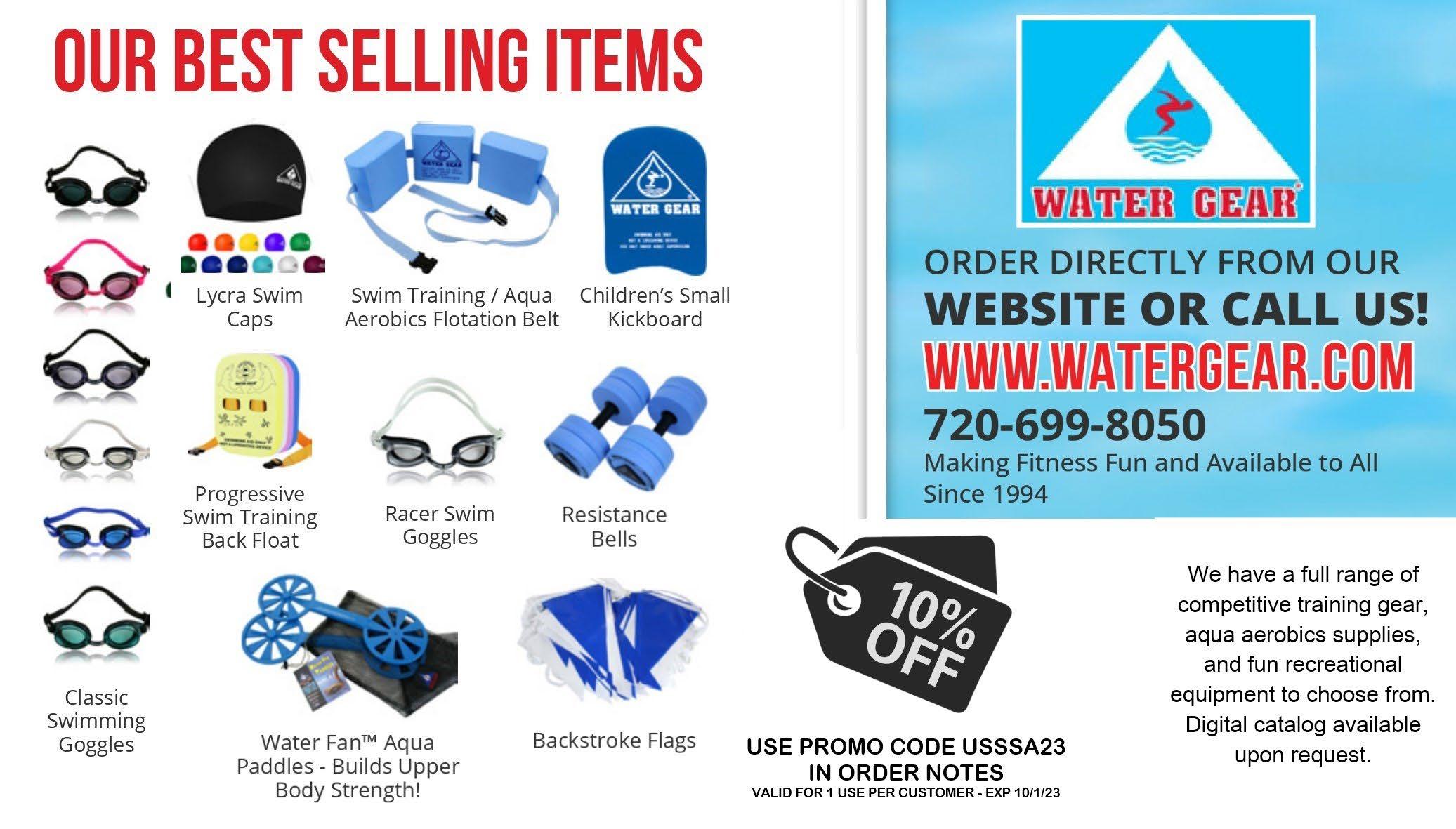
During water safety month, our individual managers for our swim schools and admin staff each selected their favorite water safety tip and are presenting it in video format. We will be sending one video out each week to our member base.
TRACY KOLEBER NITRO SWIMMINGNo matter what the age or level, every student begins each lesson by asking permission from their teacher to get into the water. Each level also has a safety skill they must pass before moving up to the next level. We have four safety weeks built into every year. Each level has a topic to review during that week such as making sure there is an adult present, finding the safety spots in the pool, and some levels practice swimming with their clothes on. During water safety month we create water safety tips and email our parents as well as post on social media.
One campaign we started last year was we had water watcher badges made up with lanyards for our parents. We then talked about backyard and cottage safety and having a designated water watcher established prior to entering water. We explained the importance of this designated person not being distracted (no phones etc) while they wore the badge and had that responsibility.
Another fun activity that we do for the swimmers is a coloring contest with safety sheets and ask them to write messages about safety, we then post them on our wall so others can see.
BUFFY FOLISE CHICAGO SWIM SCHOOL
A safety element is built into all of our lessons. During safety month and months leading into our summer we have more focus around educating our community of families. We have a lot more social media campaigns and in our facilities we post more awareness campaigns about safety.
DAVINA LOPEZ DAVINA’S SWIM HOUSE
WHAT IS SOMETHING THAT YOUR SCHOOL DOES DURING SAFETY MONTH THAT YOU ARE PROUD OF?
SET, SWIM SUMMER ISSUE GETTING TO KNOW YOUR BOD!
In class we have a short list of Safety exercises per level that we will focus on each week of May. Each level will demonstrate jumping in with, for example NO goggles, PJ’s for the littles, working up to full clothes, learning to remove them, maintain floats, return to wall rescues. The upper levels will learn to make a floatation device with their jean pant legs. They get to float in a boat and be flipped over with and without lifejackets. They get to surface under a mat and learn how to crawl in a face up position out from under it and return to safety. They are taught when and how to call for help. They learn to Throw not Go. Learn to lay flat on their tummy from the edge of a pool and hold a noodle out for a rescue. The older kiddos will learn how to throw the rescue tube and then on up to a buoy. All children will have the opportunity to learn to grab on to the noodle, rescue tube and buoy.
DOLFUN
SWIM ACADEMYLast month we talked about Beach Flags and the meaning of the flags. Most parents and kids did not know what the colors meant. We received lots of positive feedback from parents saying their kids talked about it and one family made the choice not to swim after seeing the purple flags which was the cause of the dangerous marine life “jellyfish.”
For the months of April in and May we have even participated with local agencies in the past to get an official proclamation made for Water Safety Month and participated in PSA’s and press conferences.
We review the Safer 3 sheets during lessons and discuss the water watcher tags in our lobby with parents. We have our staff wear the Safer 3 costumes on deck to create awareness and start conversations about safety.
ANN MARIE SUNDERHAUS HUBBARD FAMILY SWIM SCHOOLWHILE WE BUILD SAFETY ELEMENTS INTO CLASSES ALL YEAR LONG, FOR SAFETY MONTH WE POST FACEBOOK ANNOUNCEMENTS FOR WATER SAFETY AWARENESS MONTH, ALONG WITH AN EMAIL OUT TO OUR FAMILIES.
Hubbard Family Swim School hosts safety week. We hand out the Safer 3 Coloring sheets to all of our clients and ask them to bring them back in to hang up!
Every lesson we go over safety skills and speak about how we can always be safer around the water. Then in the last week of the month we share one specific topic with parents, children, and the community via social media and talking points.
MELISSA TAYLOR
SMALL FISH BIG FISH SWIM SCHOOL
WE HAVE A GROWING SWIM SCHOOL AND REALIZE THE IMPORTANCE OF HAVING A PERFECT TEMPERATURE FOR OUR PATRONS AND INSTRUCTORS. RECENTLY, WE HAD A VERY BAD EXPERIENCE WHEN OUR HEATER DIED, WITHOUT NOTICE, AND WE WERE WITHOUT HEAT FOR DAYS. WE HAD TO CANCEL LESSONS, AND TOOK A BIG HIT TO OUR REVENUE AND REPUTATION. WHAT CAN WE DO TO MINIMIZE THESE DISRUPTIVE EVENTS?
Welcome
Wow, sorry to hear about your recent experience. Water temperature is truly one of the key parameters to a successful swim school program. But you’re not alone. Too many schools suffer unplanned closures due to heater issues, and it is a great idea to take some proactive steps to minimize these issues. Here is some basic info and some timely tips.

There are several types of heating systems, including solar, heat pumps (air source and water source), electric, and gas heaters (both natural gas and LP). Given the critical nature of having quick and reliable heat, solar and heat pumps do not normally offer a complete solution, so we won’t address them here. Electric is slow and expensive, and few schools have the available power capacity (additional 75-100 kW) to install it, but it is a terrific last resort in the event you found a perfect school site that does not have available natural gas supply, or does not allow an LP tank to be installed. Let’s concentrate on gas heaters for the sake of this article as they are quick (1-2 degrees F per hour), and are relatively reliable, if properly cared for. Big if there.
The major variables that will negatively affect heater life (non-factory defects) are: improper chemistry, improper flow, improper venting, and lack of preventive maintenance. You should opt for a heater with the correct “build” and most codes require an ASME model. It is recommended to use a heater with a cupronickel heat exchanger (instead of copper), as well as bronze headers on both ends of the exchanger instead of coated cast iron.
If you’re not taking direct minute-by minute control of your chemistry, then that should be job one before spending money on any other solution. Maintaining a 7.2-7.5 pH and a reasonable chlorine level (note EPA maximum is 4 PPM) are baseline requirements for helping your heater enjoy a long life. Having a system that alerts your team of any out-of-range parameters is a great way to further minimize any issues.
But there’s more to water balance than chlorine and pH. Most fill water is low in both calcium and total alkalinity, and failing to correct these variables in your pool leads to aggressive water that will destroy a heater well before its time. If using a bleach system, you need to manually correct these variables monthly at a minimum, and if using a Cal Hypo system, these are being added as a byproduct of chlorination, so only minor corrections are required periodically.
Recommendations:
Maintain the acid vat at a 1:10 acid to water mixture, no stronger. This will reduce the alkalinity scavenging properties of muriatic acid, while reducing fumes in the equipment room, helping you maintain an optimum alkalinity. Also, monitor and lower the phosphate levels when they exceed 1,000 PPB (parts per billion), which will help the effectiveness of the chlorine system. Keep calcium levels at 300 PPM minimum, as plaster has shown to degrade quicker at lower levels, forcing you toward an expensive re-surfacing.
IMPROPER FLOW:
Heater flows are set by adjusting a bypass valve in the main return line to divert proper water to the heater. It is CRITICAL that this valve has been adjusted to maintain a 10-14°F (12°F is common) differential (delta-T) between the water entering and leaving the heater (depending on the heater model). This will help prevent premature degradation of the heat exchanger. Too high a flow (low delta-T) will erode the exchanger and condense water in the exchanger, both severely shortening heater life. Too low a flow (high delta-T) will leave damaging deposits in the heat exchanger, and will allow too much heat to escape though the venting, costing you money. Improper venting can also cause issues, preventing proper operations or sending condensate water back into the exchanger where it will wreak havoc on heater.
Recommendations:
Install (Letro or other) monitoring thermometers in the influent and effluent heater lines near the heater. This will allow your operators to verify the 1014°F delta-T on an on-going basis. The monitoring thermometers can also help diagnose a malfunction of the internal heater bypass, which would normally go unnoticed, and would contribute to condensing or erosion of the heat exchanger. A heat resistant flow meter, such as a “FloVis” can also provide verification of proper flow. Have a trained factory technician verify the venting draft annually.
Given the importance of the heating system to your overall livelihood, and the effect of a few small adjustments on the performance and lifespan, it is CRITICAL to provide proactive maintenance for your heaters. Doing nothing and waiting for it to break is not a winning strategy. We recommend a proactive heater service optimally at 2X a year, but once a year at a bare minimum. The servicing company should check water flow, gas pressures and delta-T, inspect and clean the exchanger, verify the venting, and give you an honest assessment of the heater’s condition.
These simple steps will help you keep your heating “emergencies” to a minimum. Having redundant heaters (example: two 200K BTU’s instead of one 400K BTU) or a good heater supply company on the team is paramount, but doesn’t fully resolve the current supply chain issues sourcing circuit boards, heat exchangers, or complete heaters.
It makes a lot more sense to spend a little time and money proactively staying ahead of any heater issues by paying close attention to the variables you’re subjecting your heater to, and making sure you have a winning strategy to avoid down time.
Please feel free to forward your questions and comments through the USSSA office, or directly to me via email at amendoza@ceswaterquality.com.
Best Regards,
Alvaro G. Mendoza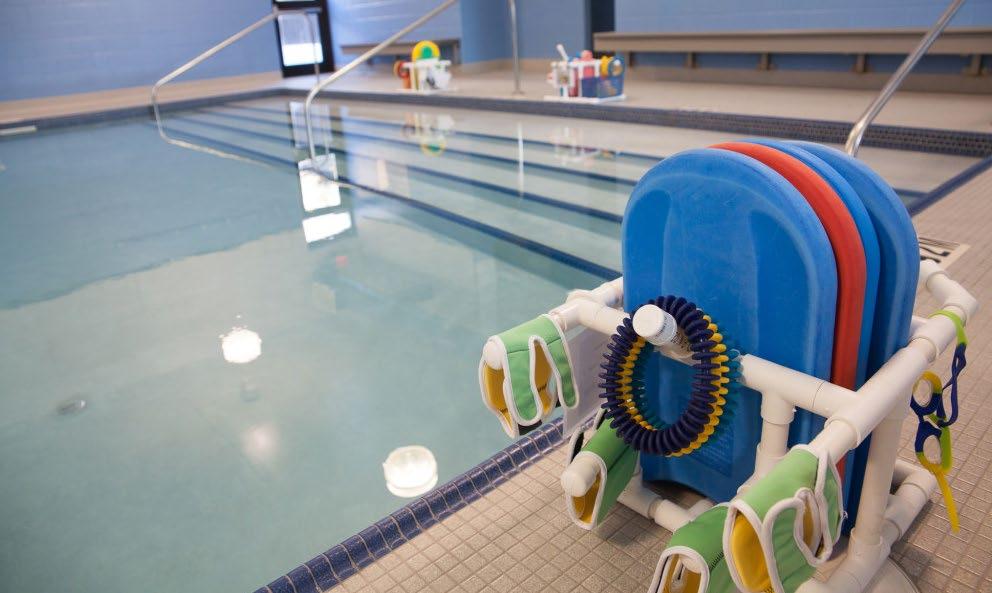
This project identified 7 key projects that would collectively reduce the facility’s electricity consumption by 24%, natural gas by 25%, and water by 14%. These projects were identified in a swim school that was already energy and water efficient due to a conscientious team of management and operators. These projects would have a 2-year payback and require minimal capital cost.
THE FACILITY ALREADY EMPLOYED NUMEROUS BEST PRACTICES, INCLUDING:
• The drain rate of water from the pool closely matched jurisdictional code requirements which stipulate how much fresh water must be supplied and removed from the pool per bather per day. This can be a major source of waste in pools if not closely monitored, especially in heated pools as excessive drain rates result in both wasted water and energy.
• The facility consistently uses a pool blanket to cover the pool when it’s vacant. This leads to a lowering of pool water evaporation and generates tangible benefits in numerous areas such as a reduction of:
• required water makeup.
• operation of the dehumidifier and corresponding electricity consumption & dehumidifier compressor wear & tear,
• heat losses from the pool and energy to maintain the pool temperature due to conserved energy associated with the phase change from water to vapor,
• utility costs.
Altogether, consistent use of the pool blanket in the evenings reduces utility costs by approximately 13% and every hour the blanket is over the pool saves the facility $1.23. Facility staff indicated that the pool blanket cost approximately $375, this translates to a payback of 24 days. This also reduces facility Greenhouse Gas (GHG) emissions by 35%.
• A high efficiency natural gas water heating technology is utilized at the facility.
• The facility also employs heating and cooling setbacks in the evening to reduce the energy required to condition the building when it’s unoccupied.
• Reducing the speed of the recirculation pump during evenings when the pool is unoccupied can dramatically reduce electricity consumption. Pool pumps are likely one of the largest electrical loads in the operation of a pool and the physics of pump operation can be leveraged to save energy. Due to the relationship of pump speed and power, a 50% reduction in speed can result in a theoretical electrical energy reduction of 87.5%.
• Installing a heat exchanger on the pool drain water to recover heat from the discharge to preheat the incoming pool makeup water can reduce the energy requirements of the operation.
• Operating the building exhausts (change rooms, cafeteria, etc.) on a timer to reflect occupancy can reduce fan run time and reduce the amount of air exhausted and conditioned from the building, reducing the air conditioning load in the summer and the heating load in the winter.
• Low flow domestic fixtures, chiefly low flow shower heads, reduce domestic water consumption and energy to heat water. Replacing standard or high flow shower heads with modern low flow WaterSense fixtures can have a significant impact for little investment. Standard fixtures use 2.5 gallons per minute (GPM) whereas WaterSense labelled fixtures typically use 1.5 to 2.0 GPM (a 20% to 40% reduction in shower water consumption and energy).
Continued on next page...
In 2021, Enviro-Stewards partnered with Making Waves Swim School in Milton, Ontario, Canada to identify and compile business cases for strategic projects to help the organization reduce its carbon footprint.
• Heating system fuel type (electric vs. fossil fuel) and mode of operation can significantly influence facility emissions. Depending on the cleanliness of the electrical grid servicing a jurisdiction, electrification of heating systems can dramatically reduce emissions.
• Electric space and water heating are common technologies that have been in use for many years and serve as an alternative to natural gas heating solutions.
• Heat pump technology can also be considered for air and water heating applications, which depending on location and time of year (weather) can offer reduced operating costs compared to traditional electric heating (by moving multiple units of thermal energy for each unit of energy used to operate the heat pump).
• One of the largest energy consumers is dehumidification of the natatorium air. As water evaporates from the pool surface, the humidity of the natatorium would continue to climb (without dehumidification). High humidity can lead to structural damage and create an uncomfortable climate for guests. Pool dehumidifier selection can have a significant impact on energy consumption. Some key areas to consider would be:
• Variable speed recirculation fan to modulate fan speed and save energy when space humidity setpoint is achieved.
• Heat recovery from exhaust air and hot refrigerant gas (excess heat can be directed to heating building air or pool water when needed).
• Compressor efficiency.
• Minimize ventilation.
• District energy or synergies between adjacent spaces or buildings to take advantage of waste energy from one process to offset another.
• Drain water from the pool and/or dehumidifier water can be recovered in a tank and used to offset fresh water for rinsing shower/change room floors or flushing toilets (would require use of plastic components to prevent risk of corrosion).
• Solar thermal to offset heating requirements.
• Quality of insulation (envelope, pool walls, and floor) can also impact energy usage dramatically over the life of the facility, especially in colder climates. Insulation of pool walls and deck is more cost effective during a new build rather than a retrofit to an existing facility.
The operation of an indoor swimming pool is an energy & water intensive process and can generate significant CO2e emissions throughout its life. Not to mention cost – depending on the jurisdiction’s utility rates, the building’s infrastructure, and the efficiency of the operation, energy and water can have a significant impact on a business’ bottom line. The cost of energy, water, and carbon taxes are rising and are likely to continue to rise as the need to act on climate change has never been more urgent.
The strategies discussed are practical ways to improve the operation, but how do you know these systems are preforming as expected 1 or 2 years after commissioning? The short answer is that most building operators are currently not aware the moment their systems drift from their original configuration, why their energy demands have suddenly increased, or why their water bill doubled last quarter.
Implementation of an Energy Management Information System (EMIS) can help building operators and owners gain valuable insights into the performance of their equipment, quantify Key Performance Indicators (KPIs) to help focus efforts, and direct attention of management towards crucial maintenance and sustainability actions. Enviro-Stewards is currently developing an EMIS for deployment across a wide range of industrial, commercial, and institutional settings and has developed purpose-built programs for aquatic centers. The cost of sensors to measure water, electricity, natural gas, temperature, humidity, etc., has decreased substantially in recent years. These sensors can now connect wirelessly to the internet to gather and transmit data in real time providing low-cost visibility to the assets that control our facilities. Enviro-Stewards is launching a platform to integrate these sensors into one central interface with custom logic to:
• Deliver SMS/email alerts to building operators when systems, consumption patterns, or equipment perform unexpectedly.
• An IoT (Internet of Things) flow meter on the water main will measure & report minute-by-minute water consumption (24/7) so that when a leak occurs, building operators will receive a notification and can respond immediately.
• Through measurement of various equipment (HVAC, lighting, pumps, filtration equipment, heating equipment) significant energy consuming systems can be monitored to identify and flag anomalous patterns that can help shape and influence operations.
• Report on KPIs. In the case for aquatic centers, the following relevant KPIs are incorporated:
• Through measurement of the dehumidifier, it’s possible to measure pool cover performance by correlating the compressor operation with humidity load to report on % of time pool is covered and encourage consistent usage. Simply covering a pool at night (when not in use) with a pool blanket can save thousands of dollars per year and avoid unnecessary utility consumption and GHG emissions.
• An IoT water meter on the pool drain line will calculate real time drain rate per bather (L/bather or gal/bather) so that pool operators can control pool drain water in compliance with local code requirements to maximize conservation efforts.
• Quantify real time GHG emissions of the operation and offset the emissions through equitable carbon offsetting programs.
• Report on financial and environmental impacts of initiatives to demonstrate how infrastructure and behavior shapes the organization’s bottom line and directly influences facility emissions.
• Track an organization’s sustainability journey from business as usual through to a climate positive contributor.
Facility owners have already begun developing creative ideas to expand the impact of the system. One swim school owner in Canada would like to bring the opportunity to their customers to allow them to purchase carbon offsets or removal credits to neutralize the emissions associated with participation in the school. By quantifying the emissions on a per user basis, customers, bathers, or club members can purchase offsets or removal credits through a variety of options which can help the facility achieve a net zero or carbon neutral status. Creative endeavors such as this will be required to future-proof business of the twenty-first century and beyond.
Conducting an energy assessment or incorporating design for the environment principles into a retrofit or new construction project is the first step in addressing climate & sustainability goals and reining in operating costs. To secure gains indefinitely into the future and respond in a timely manner when systems inevitably drift or fail, monitoring solutions are needed to provide a real time pulse of complex mechanical and electrical systems which drive our world, strain our energy systems, impact profitability, and contribute to the climate crisis. Often, facility operators incorrectly assume that everything is running as intended. Or the systems of everyday life become wallpaper as we become accustomed to the way things are and have always been. Gaining insights into critical infrastructure coupled with review from data scientists and engineers allows for new questions and new answers. This gives way to new methods of managing the systems we interact with everyday as well as help businesses to be resilient and contribute successfully to the transition to a low carbon future.
Enviro-Stewards is an engineering company specializing in assessing industrial, commercial, and institutional facilities to identify practical cost saving strategies which help businesses and organizations reduce their carbon intensity, reduce operating costs, and generate positive social benefit. Enviro-Stewards is a Best for the World classified B Corporation and the only Canadian company to win a Global SDG award. Ten of their engineering projects have won national sustainability awards, including helping Maple Leaf Foods become the World’s First Major Carbon Neutral Food Company and helping 50 Canadian Food & Beverage processors to reduce food loss by $240K/yr each (link). Enviro-Stewards also founded the safe water social venture project that was featured in B the change magazine, MEDA magazine, a brief documentary (Ngongakinda), and a TEDx talk
3rd Level | p16
A3 Kids Performance | p15
Australian Swim Schools Association | p11
Career Plug | p8
CES | p15
Cressi | p5
EOS | p22
FINIS | Inside Front Cover
Hinge | p25
iClass Pro | p13
Jackrabbit Swim | p2
Merchant Cost Consulting| p40
Neptune-Benson | p24
Risk Management | p39
Splash About | p6
TeamUnify | p21
Tri Swim | p36
Water Gear | p27

USSSA stays true to its purpose that babies, toddlers and children of all ages participate in swim lessons. Our learn-to-swim schools adhere to the highest standards within the swim industry and safety first and always is one of our core values. Our members are life-long learners and educators and subject matter experts in this space. We bring education, innovation, collaboration, integrity and empathy to all matters related to aquatic safety and swim instruction. Our voices are imperative and we must play an active role in government affairs related to our industry.
The association is currently tracking 30 bills from across the country ranging from water and safety education, transportation bills to increase water safety instruction, licensing and regulation, model aquatic safety plans, lifeguards, and more. Over the past few months our lobbyists and group members in New York, Georgia, Texas and California have been working tirelessly to advocate for the adoption or rejection of various legislation. Below you will find a comprehensive overview of each state where USSSA is actively lobbying.
The USSSA’s New York Water Safety Coalition is actively working on getting two bills passed. The first bill, S3608 (http://bit.ly/41Uxl2O) that would require hospitals to show a water safety parent education video ( http://bit.ly/3Ld63hh) to new parents was voted on by the New York Senate Women’s Issues Committee and passed unanimously on April 26th. This is a huge win and we are excited to see the bill in the Senate. Our hope is that other states will also adopt this video legislation in the future.
The second bill S8906 (http://bit.ly/41GR2LV) consists of legislation that would subsidize transportation to swim lessons. As of mid April this bill resides in the Education Committee and no further action has been taken.
In Georgia, SB107 (http://bit.ly/3Ax4 je3) as written and in the final version, was sent to the governor’s desk on March 29, 2023. Initially the bill, as filed, would have required government licensure of swim instructors, mandated ratios in statute, insurance requirements, and criminal penalties for non compliance among other things. In working with our Georgia lobbyist and committee members, we were able to get to a reasonable position the bill is in now.
1) Requires DPH to develop a model aquatic safety plan by January 1, 2024 and allows them to partner with external organizations to develop it.
2) Model plan must include recommendations on ratios for group lessons, secondary supervision, participation or presence of a caregiver during lessons, and CPR certification.
3) Names USSSA and National Drowning Prevention Alliance as nationally recognized authorities who can be relied on for additional provisions in the model plan.
4) No later than April 1, 2024 every private swim instructor must have a plan in place before providing lessons.
5) The swim instructor can adopt the model plan or develop their own that has items outlined in item #2.
Continued on next page...
Drownings and non-fatal drownings are truly a matter of life and death! For that reason, we advocate and lobby!
ANNE ARUNDEL SWIM
Josie Howdyshell
Huntington, AL
LIFECYCLE AQUATICS
Jennifer May
Montclair, NJ
NORTH ALABAMA SWIM SCHOOLS
Kristin Stitt
Huntsville, AL
SUPER AQUA SWIM SCHOOL
Samara Duarte
Weston, FL
SWIM MOVEMENT INTERNATIONAL
Angie Teo
Singapore
The next step is to create a Model Aquatic Safety Plan to recommend to the Georgia Health Department for their consideration, which will be developed by a USSSA Task Force. The first meeting is transpiring on May 1, 2023.
In Texas, HB1568 (http://bit.ly/3HiVg42) is relating to the licensing and regulation of child swim instruction operators; requiring an occupational license; imposing penalties, including administrative penalties and authorizing fees. This bill is also in the Senate SB765 (http://bit.ly/3LzLP2E). USSSA is in opposition of the bill, as filed, due to the fact that it excludes sole proprietor swim operations and municipalities. These operations are not any safer than programs and should be included. Also, as the bill is currently written, it only recognizes the American Red Cross and the YMCA certification and training requirements and not USSSA’s certification program. Lastly, there are additional nuances in the bill that have not been thoroughly vetted and detailed out. Several USSSA Members had testified in front of the committee on March 22, 2023. A grassroots email and calling campaign had been conducted. The bill was reported favorably as substituted on April 19, 2023 by the Licensing Administrative Procedures Committee. The bill is now in the Calendars Committee. Further lobbying and engagement efforts will transpire over the course of the next several weeks.
Secondly, we continue to monitor HB59 (http://bit.ly/40Mtvrv) relating to child water safety requirements for certain organizations; authorizing discipline action, including an administrative penalty. The bill identifies when a child must use a flotation vest when on a water-related activity with an organization such as day camps, schools, or childcare facilities. This bill was voted favorably without any amendments on April 3, 2023 and the committee report was sent to Local & Consent Calendar on April 13, 2023.
In California, AB-1445 (http://bit.ly/3oPGgEr) has been introduced that would authorize specified organizations to provide informational materials, in electronic or hard copy form, to a public elementary school regarding specific topics relating to drowning prevention. The bill would require, beginning with the 2024–25 school year, upon receipt of the informational materials, a public elementary school to provide the informational materials to parents, legal guardians, or caregivers of pupils in kindergarten to grade 3, inclusive, at the time the pupil enrolls at the school and at the beginning of each school year. California Coalition for Children’s Safety & Health continues to try to work with a member on the Assembly Education Committee to make stauroy corrections to the bill but so far the corrections have been declined.
Also, they are working to get other water safety bill language added to bills under consideration in this legislative year, including codifying swim lessons as “essential public health services.”
To access the bills we are tracking across the United States please type this link into your browser: http://bit.ly/3VdpFX5. Also, if you want to start lobbying in your state please contact Linda Turnage, USSSA Strategic Initiatives Director, via email linda@usswimschools.org.


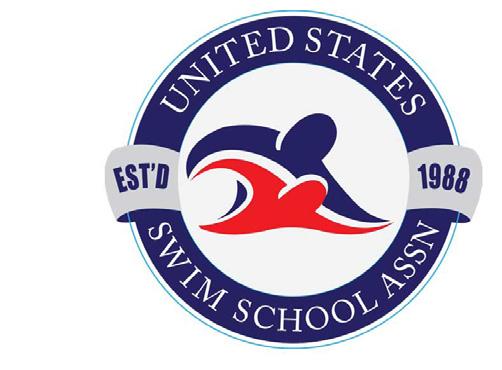
ATTENTION Members: We are NOT a credit card processing company. Without switching your current credit card processing company or integrated management software, Merchant Cost Consulting helps USSSA members reduce their credit card merchant fees expenses, audit their merchant statements, and share within the savings we are successful in negotiating for your business.
Members save more with Merchant Cost Consulting’s new strategic partnership with the USSSA! If you pay over $2,000 per month in merchant service fees, this may be something to look into. If MCC does not identify and/or find savings for your business you pay nothing AND keep your peace of mind that your business’s merchant fees are as low as they can be.
Send us the last three to six statements from your processor. We will find any hidden junk fees or exorbitant rates and estimate how much they can save you per month. If we can’t find savings, we will let you know. If we do, they can offer savings in three important categories.
1
2
MCC can go back in time and get your fees and overcharges refunded. Typically, we can go back one to three months. This, alone, can be hundreds or even thousands of dollars in your pocket.
MCC will negotiate away any junk fees and overcharges with your processor to get your processing fees to where they should be. This can save you hundreds or even thousands of dollars every month, depending on your volume and existing fees.
3
MCC will monitor your credit card statements as they come in over the future. The credit card companies are known to slowly creep back up their junk fees and processing rates and even add new ones. This is the area that often surprises people. Even those who have renegotiated rates with their processors often find savings. That’s why MCC monitors your account. When your processor raises rates, we call them to refund the rates and keep your costs rock bottom.
Pathway #1 = newly hired, with little to no previous experience
Pathway #2 = experienced instructors

Pathway #3 = 15 year old swim instructors

Pathway #4 = those with previous teaching experience and certifications
1 Select a Pathway to the exam & pay registration

2 Visit USSSA Portal for assigned pre-requisite courses.
3. Complete all the pre-requisites, use pre-requisite form to upload required documents.
4. After USSSA staff review and approval, you will receive instructions via email to schedule your online exam.